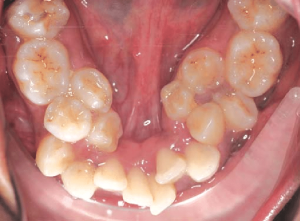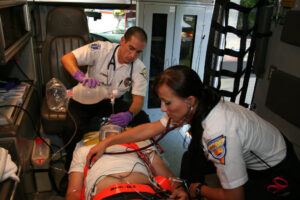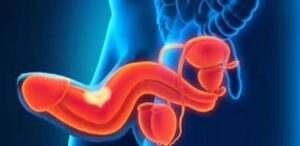What To Expect In A Dental Extraction Procedure?

641348818 kid (human age - child), face, happy, tooth (body part - teeth), oral care, dentistry (healthcare and medicine - dental health), gap, toothless, treatment (topics - healthcare and medicine), closeup, backlighted, glare of sunlight on lens
It is always better to save the natural teeth with the help of dental repair or restoration solutions. At the same time, dental extraction becomes unavoidable in certain conditions. How do you decide whether tooth extraction or repair is the right solution for your tooth problem? It is not easy to answer this question unless the root cause of the problem has been identified. It can be determined only after proper diagnosis. A dentist can identify the cause of the tooth problem with simple visual inspection or after extensive diagnosis that can involve an X-ray of the affected oral part. In cases where dental extraction becomes necessary, it helps to know its procedure, risks and costs.
Dental Extraction Pain?

The reason why most people fear to go to the dentist is because of the pain. The days when dental extraction used to be extremely painful are over. While it is not a completely painless procedure, now advanced tooth extraction techniques and potent local anesthesia ensure minimum pain. In fact, you are unlikely to feel any pain during the tooth removal process due to the effects of the anesthetics. Once the main procedure of tooth extraction is over, you will gradually feel some pain once the effects of the anesthesia wear off. However, by then you will be able to manage the pain because the problematic tooth would be gone. Later, the painkiller and other medicines ensure minimum pain during the dental extraction healing process. Within a few days, you will be beck to your normal self.
Talk To A Dentist Before Tooth Extraction Procedure
The best way to overcome the uneasy feeling of tooth extraction is to talk to the dentist. Discuss the symptoms, extraction procedure and dental extraction recovery time. Once other options have been ruled out and only the tooth removal option is left, it is better to complete this process as soon as possible. Leaving a diseased or damaged tooth at its place means it starts damaging the nearby teeth and gums. Save the adjacent teeth and gums that are not diseased or defective. It is possible only if you go for the diseased tooth removal treatment in time. Do not delay this procedure if tooth extraction is recommended by the dentist. Schedule a meeting with the dentist right away for tooth removal.
The Actual Procedure Of Tooth Removal
In the first step of the tooth removal process, the dentist will numb the tooth, surrounding gum tissue and nearby bone. It is done by injecting a local anesthetic. Dentists sometimes face problems if a patient has a complex dental issue. Appropriate steps are taken based on the condition of the teeth and gums. Age, health condition and some other factors affect what course of action is devised by the dentist for dental extraction. Rest assured, you will receive the best quality treatment and care. Just make sure you do not damage your teeth and gums further using any unverified solution or by delaying the tooth extraction.
Why You Need To Remove Your Teeth
Tooth extraction becomes necessary due to various reasons. Most of the time, it is a tooth damaged due to age or disease but there are other reasons as well. Sometimes teeth are damaged in an accident. Extensive decay can cause the teeth to break or crack. Repair is not an option in such cases. Teeth affected by the periodontal diseases of gums must be pulled out. Tooth extraction may be the only solution if the gum disease has developed to an advanced level.

Some people have useless misaligned teeth that must be removed to restore the natural functions of the remaining teeth. A non-functioning or wrongly positioned tooth is removed due to this reason. It prevents further negative impacts on the adjacent teeth and surrounding gums. In some types of orthodontics treatments, a wisdom tooth removal procedure is carried out for better alignment of the remaining teeth. Some people have Hyperdontia (supernumerary or extra teeth) that block other teeth from coming out. These extra teeth are pulled out to improve the chewing, biting, swallowing and speaking functions.
Patients undergoing radiation therapy of neck or head may require tooth extraction to avoid infection and other complications. Tooth removal is carried out to prevent infection in the cases of chemotherapy and organ transplant. Removal of wisdom tooth is a common procedure. In fact, removal of this tooth is recommended before it is fully developed during the adolescent years. It prevents potential dental problems in the future. Gum diseases, bite problem, decayed adjacent tooth, and injuries are some other reasons for the removal of teeth. Dental extraction emergency services are needed in certain cases of dental problems.
Simple And Complex Dental Extraction Methods
A simple extraction procedure is enough to remove a visible tooth. A surgical extraction method is used to remove the tooth that cannot be reached easily. Patients showing high level of anxiety at the dental extraction clinic during the tooth removal procedure may be administered an anti-anxiety medication or even sedated. While even a simple tooth extraction involves some level of surgical steps, it is not a complex surgical procedure and can be done by most dentists. A deep or extensive surgical extraction procedure can be handled only by a certified oral surgeon. The dentist will refer you to another dental expert if required. Some types of tooth removal involve removal of the gum tissue or bone. Conscious sedation may be used in certain surgical teeth extractions. Follow the dental extraction healing process as advised by the dentist. Book an appointment with the dentist for proper diagnosis of your teeth and gum problems. Call the tooth removal dental clinic to know the dental extraction cost.





